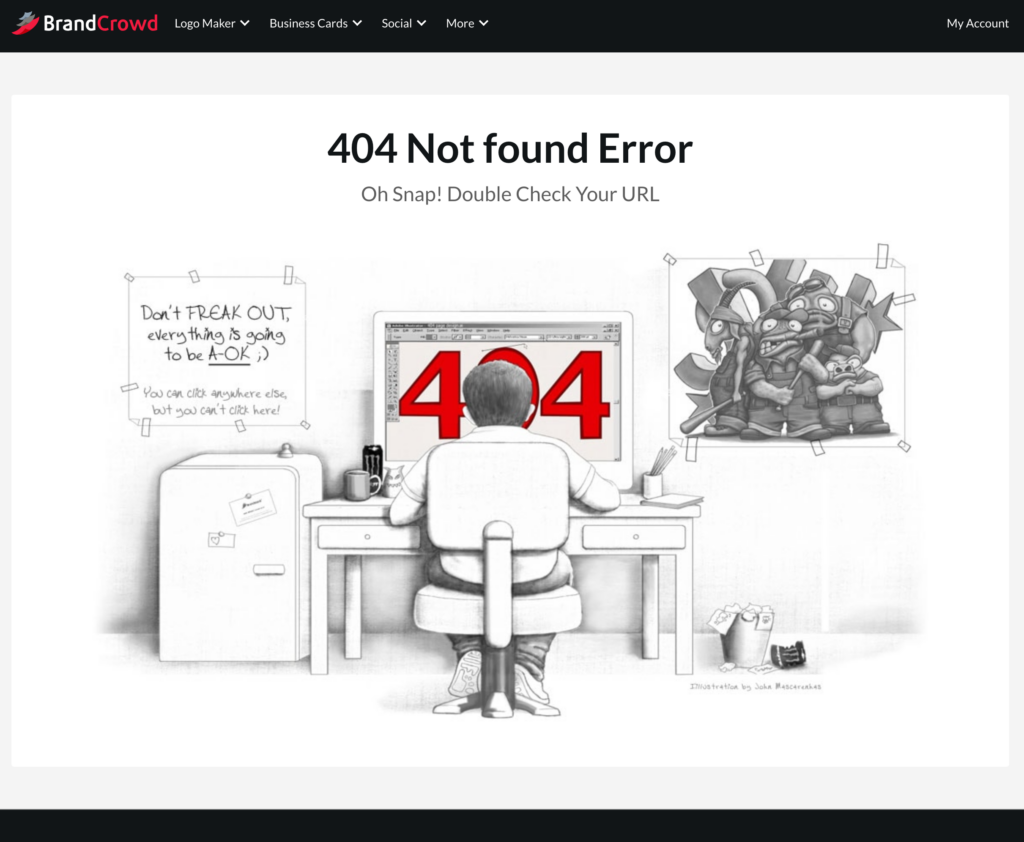In this Article
Every internet user, at some point, has encountered the “404 Not Found” message on their browser. But have you ever wondered why a 404 error happens when you click on a link? This article delves deep into the 404 mystery, demystifying the reasons behind this ubiquitous error.
What is a 404 Error?
Before delving into the reasons, it’s essential to understand what a 404 error is. In the simplest terms, a 404 error is an HTTP response code signifying that the browser communicated with the server, but the server couldn’t find the requested page. In essence, the server is telling you, “I’m here and working, but I can’t find what you’re looking for.” The visitor has landed on a page that is seemingly a dead-end, and unfortunately 74% of visitors that hit this dead-end leave to never return.
So, Why Does a 404 Error Happens When…
…the URL is typed incorrectly? One of the most common reasons for a 404 error is simply mistyping the URL. Whether it’s a missing letter, an extra character, or an incorrect domain extension, even the tiniest discrepancy from the correct URL can lead to a 404 error because the server can’t find the specified resource.
…the webpage is deleted? If you’ve bookmarked a page or found a link from another website, and the content has since been deleted or moved without redirection, a 404 error will show up. The server acknowledges your request but cannot find the content you’re looking for because it no longer exists in that location.
…there’s a broken link? Links, whether internal (within the same site) or external (leading to another site), can become broken for various reasons. It might be due to a change in the website’s structure, a page being deleted, or an incorrect URL being used when creating the link. Whenever users click on such broken links, they are met with the 404 error.
…the website undergoes restructuring? Websites evolve. They might undergo changes in design, structure, or platform. During this process, pages might be moved, renamed, or deleted. Unless the webmasters ensure every old URL redirects to its new location, users trying to access the old URLs will be greeted by a 404 error.
…the server is misconfigured? Sometimes, the problem isn’t with the website content but with the server itself. A misconfigured server can fail to recognize and serve web pages correctly, leading to a 404 error. This can be due to issues with the server’s .htaccess file, a missing DNS record, or other server-related settings.
…the site is moved to a different domain? A website might change its domain name for branding, business, or other reasons. If the redirection from the old domain to the new one is not set up correctly or at all, visitors accessing the site through the old domain will encounter the 404 error.
How Can 404 Errors Be Fixed or Mitigated?
Now that we’ve established why a 404 error happens when certain conditions are met, let’s discuss some remedies:
Measure and Track 404 Error Traffic: You know the saying, what get’s measured gets improved. Knowing how big of an issue your site has is step 1. Google Search Console will tell you what URL’s they crawl that are a 404 error, however that only paints part of the picture as you really want to know how much traffic is seeing 404 errors, and at what URLs. You can install NotFoundBot which has a free feature for tracking 404 errors, or try using something like Google Analytics.
Custom 404 Pages: While you can’t avoid every 404 error, you can make the experience less jarring for users. Design a custom 404 page with links to your homepage, sitemap, or popular content. A touch of humor or creativity can also make the experience less frustrating for the visitor.

Regular Audits: Regularly check your website for broken links using tools like Broken Link Checker or Screaming Frog. Or use a tool like NotFoundBot which also tracks 404’s coming from external sources – which may require outreach or redirection to fix. By identifying and fixing these links, you can reduce the chances of users encountering 404 errors.
Redirection: If you delete, move, or rename a page, make sure to set up a 301 redirect from the old URL to the new one. This ensures that any traffic to the old URL is seamlessly directed to its new location. We also suggest using an AI based tool such as NotFoundBot that auto redirects visitors when the visitors intent is understood, or chat guided assist when the visitors intent is less clear.
Clear Communication: If you’re shutting down a page or changing domains, inform your regular visitors in advance. This proactive communication can help manage expectations and reduce surprise encounters with the 404 error.
For a full list of suggestions on why a 404 error happens and how to mitigate it, see our best practices article.
Wrapping Up: Understanding Why a 404 Error Happens When Browsing
A 404 error happens when the server can’t find the page you’re trying to access, and this can occur due to a myriad of reasons. Essentially, the site visitor has hit a dead-end. While it’s not possible to prevent every 404 error, with vigilance, regular audits, and user-friendly custom 404 pages and AI automation, you can ensure that these errors don’t derail your visitors’ browsing experience. Don’t let a small roadblock like a 404 error be the end of the visitor journey!
